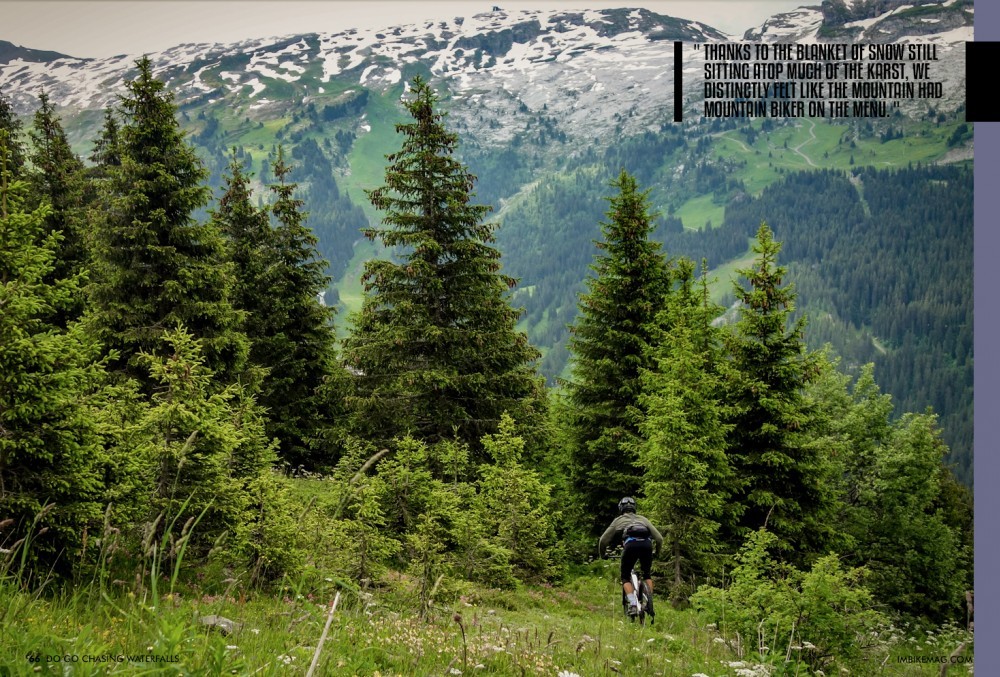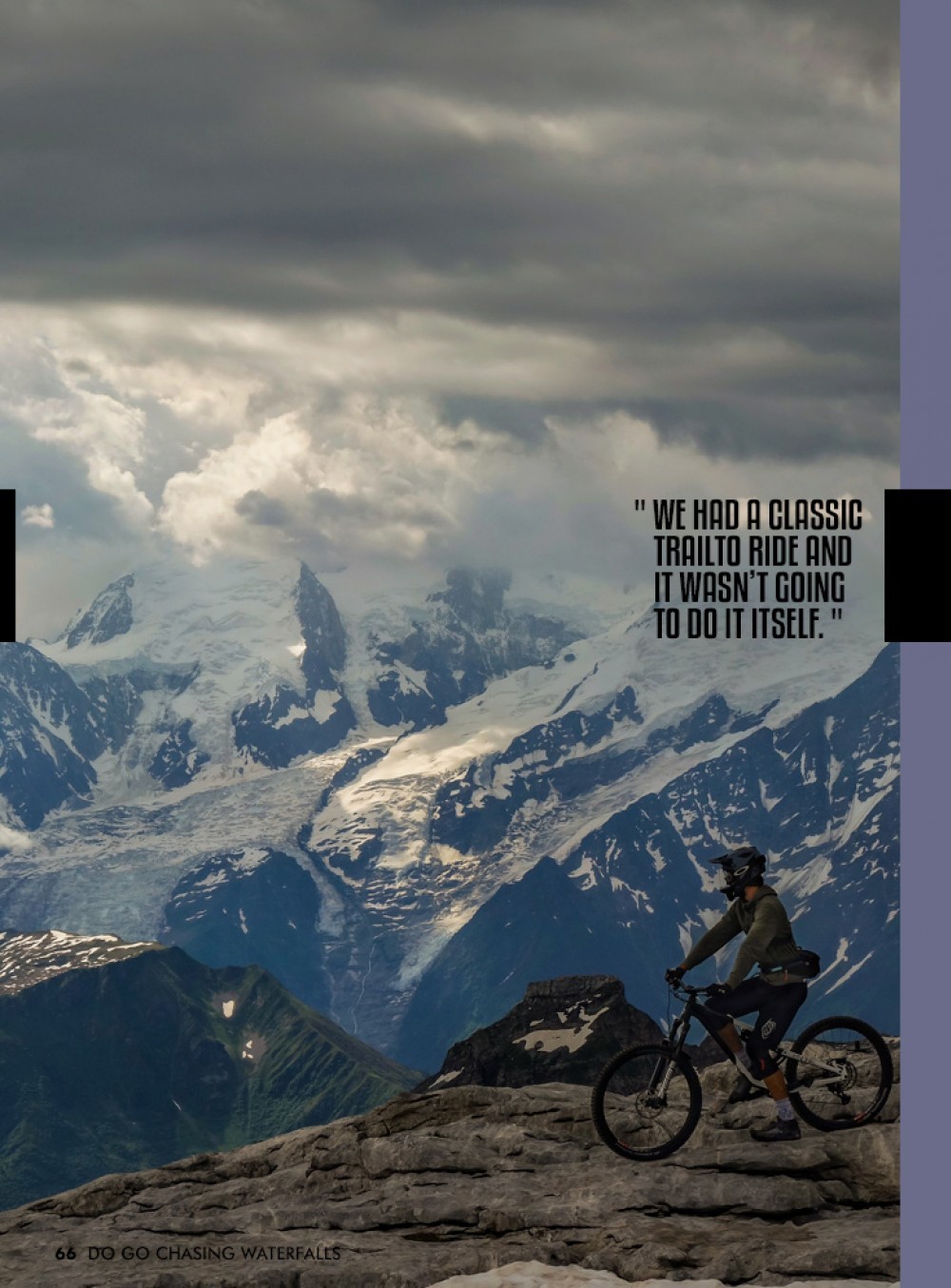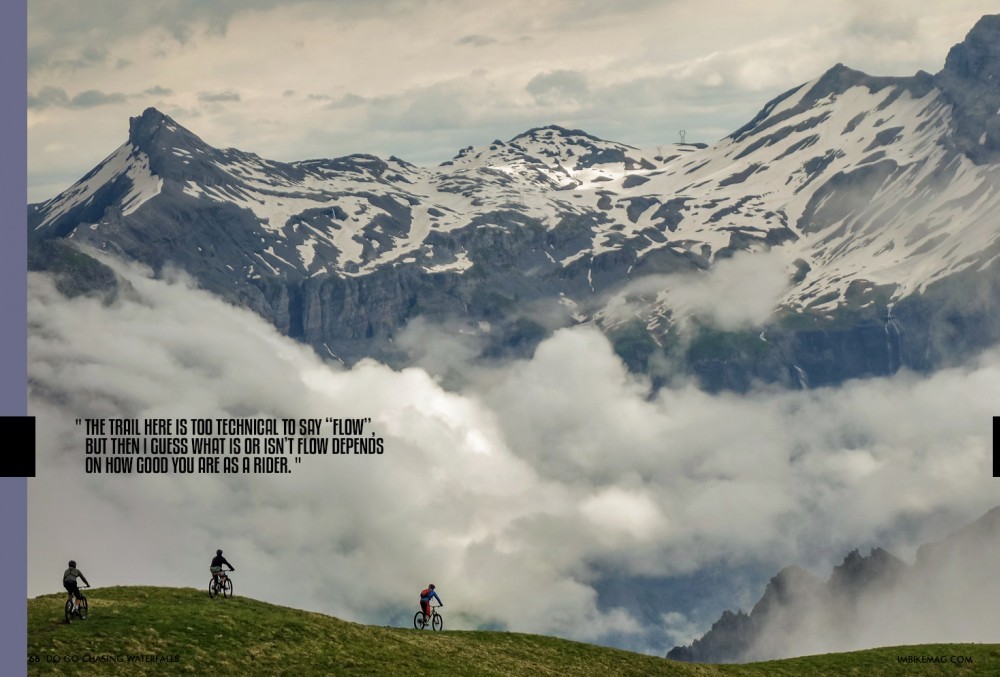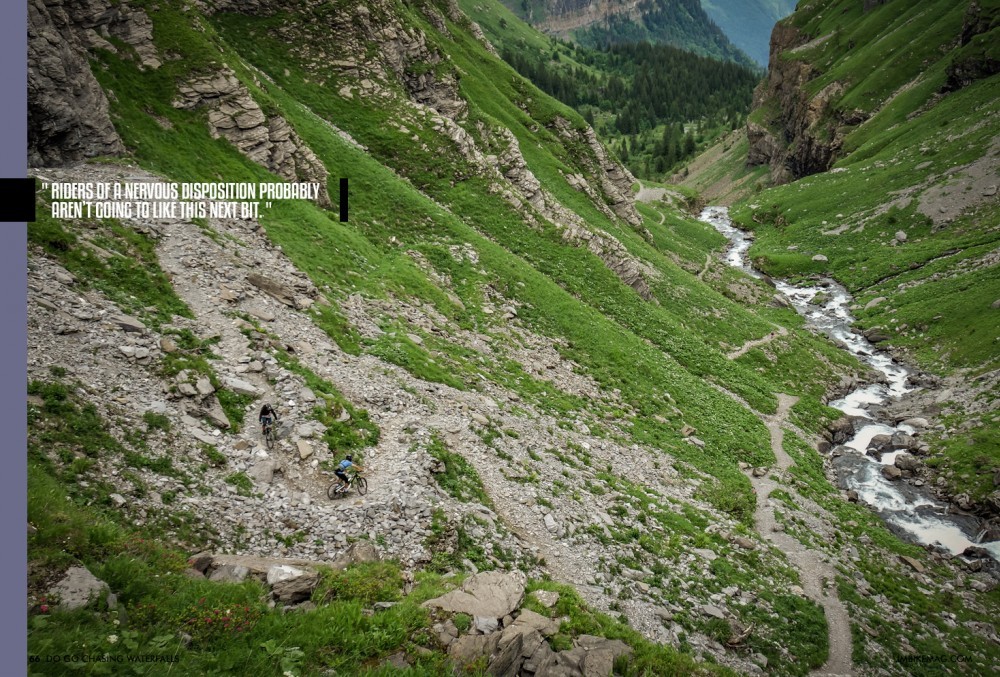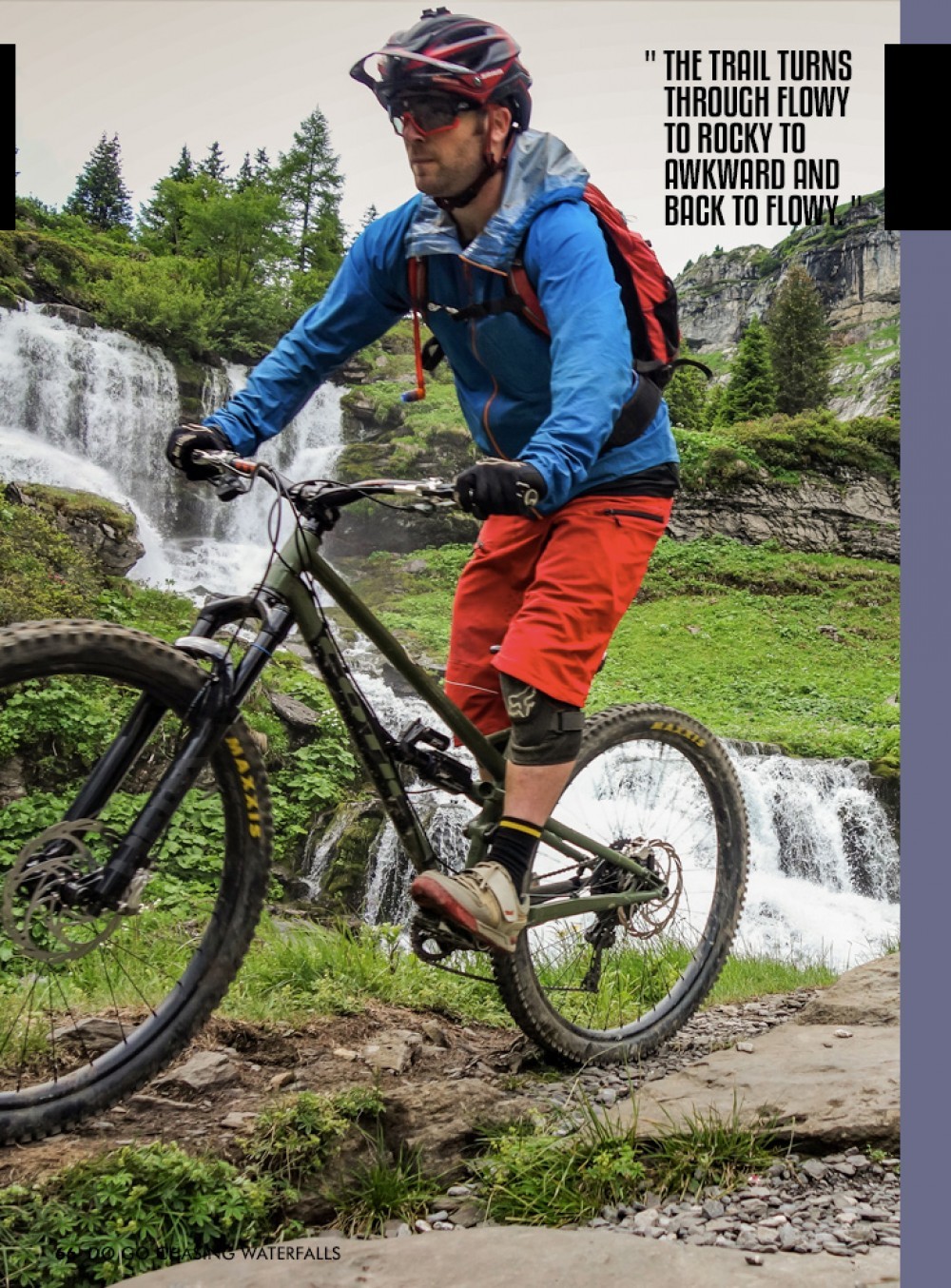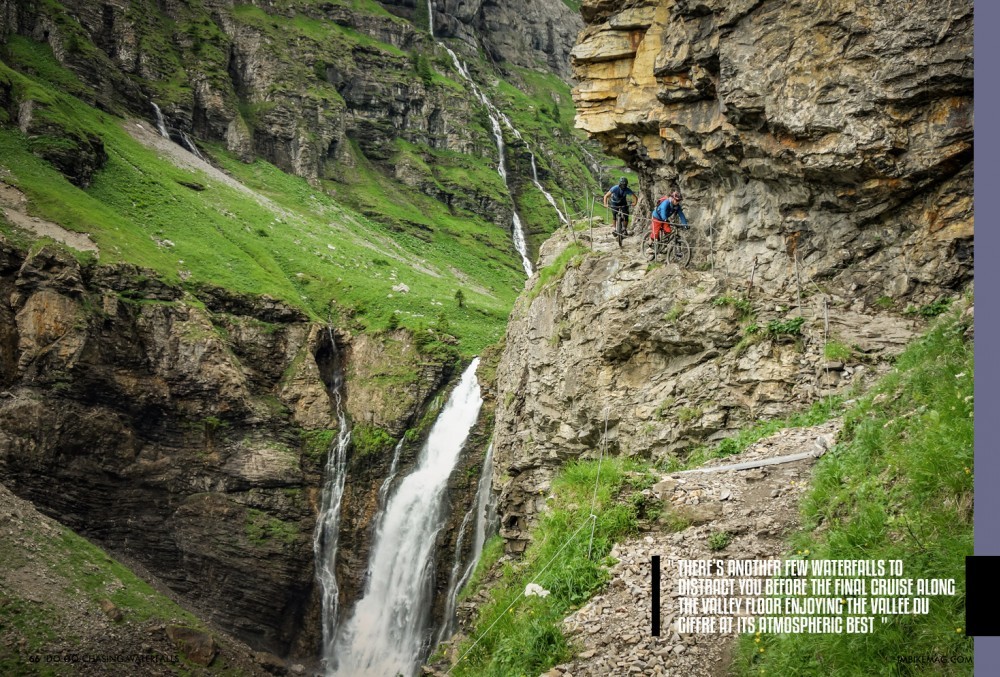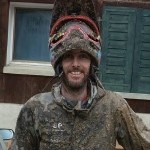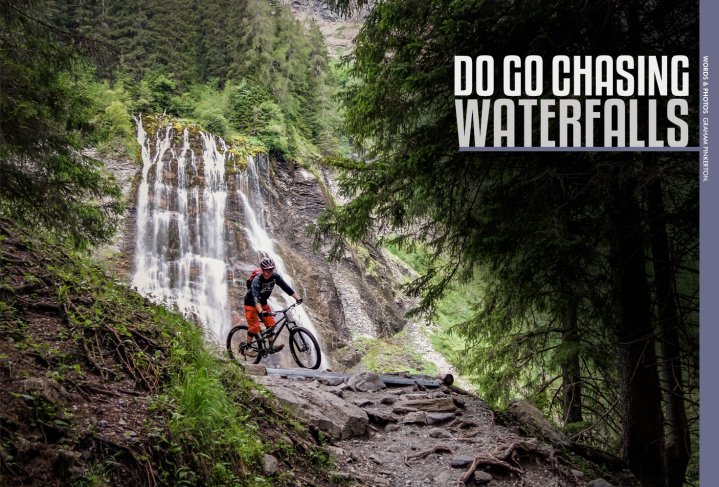
Do go chasing waterfalls
Issue 66 / Fri 6th Aug, 2021
Against the advice of 90’s music sensation TLC, Graham doesn’t stick to the rivers and lakes that he’s used to. It was his way or nothing at all. He went chasing waterfalls, and ended up riding some sick trails along the way.
Karst. It sounds like something my parents would say when they really, really wanted to swear....but you know, young ears and all that.
In fact, having googled that for you, karst is “...a topography formed from the dissolution of soluble rocks such as limestone, dolomite, and gypsum. It is characterized by underground drainage systems with sinkholes and caves.”
Thanks Wikipedia.
What does that mean for mountain bikers? Karst is like the opposite of Utah’s slick rock. A desert of grey limestone, not smooth but a rippled ocean of small waves. Find the right line and you’re in nature’s skate park. Find the wrong line and you’re in nature’s sink estate.
There’s another issue with karst, or in particular, this karst.
Perhaps I should backtrack a little, this karst is in Haute Savoie, France. We’ve just taken the DMC lift from the ski town of Flaine at 1570m to the summit of Les Grandes Platieres at 2480 and we’re standing on said desert of grey limestone looking out over towards Mont Blanc and thinking this is a pretty stunning place.
Then we start talking about the stories from when Flaine opened.
Stories about skiers heading off piste to never be seen again, having fallen into one of the many crevasses in the karst. That “dissolution of soluble rocks” leads to massive chasms opening up, primed to swallow the unwary skier. One of the agreeable things about mountain biking is generally the topography isn’t trying to eat you, but today, thanks to the blanket of snow still sitting atop much of the karst, we distinctly felt like the mountain had mountain biker on the menu.
Pushing such thoughts aside, we had a classic trail to ride and it wasn’t going to do it itself. Nearly 2000m of descending over 20km back to Samoens where we’d started the day, across every type of terrain you could ask for, if you’d asked for aforementioned karst (and snow), alpine singletrack, technical rock gardens and rooty loam in the trees that is.
You quickly get the hang of riding the karst, or you don’t particularly enjoy the riding for the first few km. The same with riding on snow. I don’t think any of us will be in the running for winning Megavalanche any time soon, but determined tripoding got us through the worst of winter's remnants.
The views are stunning and ever distracting, but the need to keep your eyes peeled for bottomless holes stops you from taking in the vista too much. Maybe best we saved it for photos. Eventually, the grey rock starts to win over the white snow, then green starts to come through the grey, then proliferates, then eventually hides most of the rock and we’re back on the alpine single track we all know and love so well. The trail here is too technical to say “flow”, but then I guess what is or isn’t flow depends on how good you are as a rider. In the absence of flow we had an absorbing challenge with pauses to marvel at the waterfalls on the valley wall opposite that gush from holes in the cliff face. Good old dissolution of soluble rocks at work again.
It’s not all technical though, there’s still plenty of smooth singletrack swooping down through the alpages. In all the best mountain biking stories these swooping trails lead to a hidden bijoux refuge. We’re not ones to buck convention and sure enough, after negotiating passage of the sheep pen with the resident Patou herding dogs, we arrive at a bijoux refuge. The Refuge des Sales in this case.
If you’ve got a bit of French in your vocabulairy, that probably doesn’t sound like a particularly inviting refuge, but I can assure you it is an oasis in this desert. And it serves dessert too. The pain au noix is delicious. The coffee perhaps not so much, but any port in a storm or so goes another metaphor.
We’ve got a trail to ride, onwards.
If I’m honest, riders of a nervous disposition probably aren’t going to like this next bit. One of the stunning things about limestone areas is the way water works the rock over millennia to create gorges and waterfalls of sublime beauty. The minor issue is you then need to find a way to walk or ride through the same precipitous gorges. Usually this means hacking a path out from the side of the cliff, which looks like pretty hard work to my soft hands, so I can understand why the path doesn’t get hacked very wide before someone reckons that's good enough and moves on.
Unfortunately they didn’t really consider modern handlebar widths when they did this, so you can end up having to balance riding very close to the edge and its DROP OF CERTAIN DOOM or riding very close to clipping the bars on the cliff face and getting flipped over to the DROP OF CERTAIN DOOM.
Or you can get off and push. But that lacks narrative drama, and disappoints the many walkers you pass on the way down who without fail want to have a quick chat about how you got here and how you’re going to ride the next bit. A cheering audience certainly adds to the experience and anyway, the trail isn’t quite as difficult as it looks, a fine example of how situation and backdrop can fool our minds.
The trail keeps going. With 2000m of vertical to burn through, the trail is going to keep going for a while longer. Yet more waterfalls pass in a blur of watery glory. The trail turns through flowy to rocky to awkward and back to flowy. Eventually we arrive at Le Lignon and another opportunity for coffee but with heavy skies threatening rain again, we push on. France is not the best place for impromptu coffee stops after all.
From here the trail loses the epic feel of higher up, being singletrack cutting between the switchbacks of the narrow road that makes its way to the trailhead of Lignon. That doesn’t mean it’s a bad trail, dropping altitude on an alpine valley walking trail is never a bad thing, and when the storm did hit us, we were pretty glad to be on the valley floor with its copses of trees to shelter under instead of high up in the exposed alpine where we were just a couple of hours or so before.
There’s another few waterfalls to distract you before the final cruise along the valley floor enjoying the Vallee du Giffre at its atmospheric best with the low cloud dragging along the vertiginous valley walls, but our thoughts were on the baser pleasures of dry clothes and food waiting back where we started in Samoens. Funny how riding in the big hills makes you appreciate the simple things in life.
The Grand Massif ski area is sandwiched between its better-known cousins of the Portes du Soleil and Chamonix, and has 4 linked areas of lifts; Samoens, Morillon, Les Carroz and Flaine, that usually open between late June and early September each summer. Samoens and Les Carroz are the best bets for a day's bikepark riding, but the wider area has lots of potential for big days out like ours, look at a map and start dreaming...
By Graham Pinkerton
Although hailing from Scotland, Graham has been settled in the alps for many years now. When he is not out doing silly mountain adventures on ski's you can find him digging new trails in the Chamonix area, or riding his bike down some exposed, tech, gnarly alpine terrain. Besides the talent to find epic trails, he also possesses the magic ability to write about a wide range of subjects, and somehow make them related to mountain biking.



